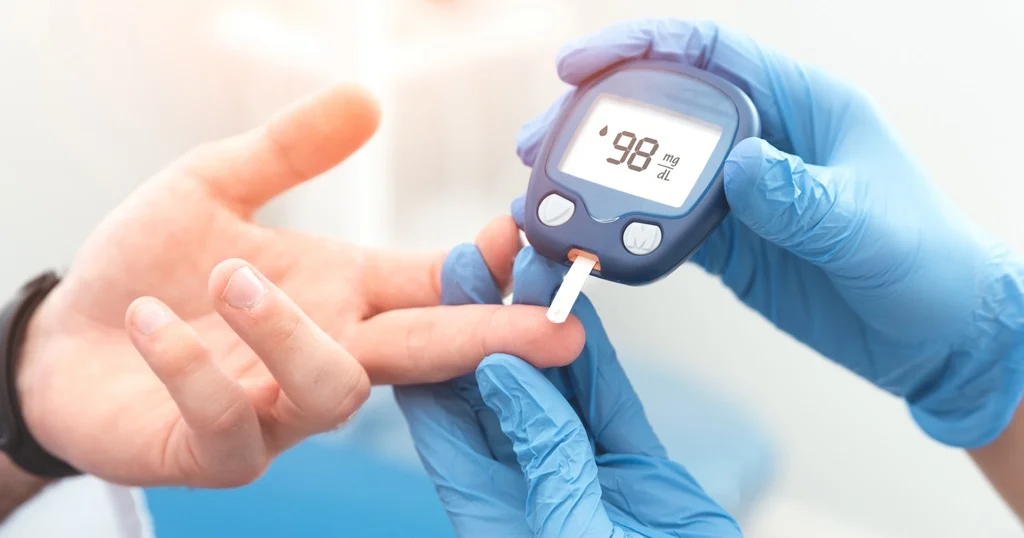
Monitoring your blood sugar levels at home is a crucial part of managing diabetes effectively. Regular monitoring helps you understand how different factors like diet, exercise, stress, and medications affect your blood glucose levels. By keeping track of your blood sugar, you can make informed decisions about your health and prevent complications.
1. Why Monitoring Blood Sugar is Important
Monitoring your blood sugar levels provides immediate feedback on how well your diabetes management plan is working. It helps you:
- Prevent Hypoglycemia and Hyperglycemia: By checking your blood sugar levels regularly, you can prevent dangerously low (hypoglycemia) or high (hyperglycemia) levels, which can lead to serious complications.
- Adjust Medication and Insulin: Monitoring allows you to adjust your insulin dosage or medications as needed, especially when your routine changes, such as during illness, stress, or changes in physical activity.
- Track Trends: Regular monitoring helps you spot trends and patterns in your blood sugar levels, which can be useful for making long-term adjustments to your diabetes management plan.
2. Types of Blood Sugar Monitoring Devices
There are several devices available for monitoring blood sugar levels at home:
- Glucometer: The most common device for home monitoring, a glucometer measures blood sugar levels using a small drop of blood from your fingertip. It’s portable, easy to use, and provides results in seconds.
- Continuous Glucose Monitor (CGM): A CGM is a more advanced device that measures glucose levels continuously throughout the day and night using a sensor placed under the skin. It provides real-time readings and trends, making it easier to manage your blood sugar levels.
- Flash Glucose Monitoring System: Similar to a CGM, this system uses a sensor placed on the back of your upper arm. You can scan the sensor with a reader or smartphone to get a reading without needing a finger prick.
3. Step-by-Step Guide to Using a Glucometer
Here’s how to use a glucometer for monitoring your blood sugar levels:
- Gather Your Supplies: You’ll need your glucometer, test strips, a lancet device (for pricking your finger), and alcohol swabs.
- Wash Your Hands: Clean hands prevent contamination of the blood sample. Use soap and water, and dry your hands thoroughly. Avoid using hand sanitizer as it can affect the reading.
- Insert a Test Strip: Turn on your glucometer and insert a test strip into the device according to the manufacturer’s instructions.
- Prepare the Lancet Device: Insert a new lancet into the device and adjust the depth setting based on your skin type. For most people, a mid-range setting works well.
- Prick Your Finger: Choose a side of your fingertip, as it tends to be less painful than the pad. Press the lancet device firmly against your skin and press the button to release the needle.
- Collect the Blood Sample: Gently squeeze your finger to obtain a drop of blood. Apply the blood drop to the test strip. The glucometer will display your blood sugar level within a few seconds.
- Record Your Results: Many glucometers store readings, but you can also write them down in a logbook or use an app. Note the time, any symptoms you’re experiencing, and what you ate or any activities that might have influenced your levels.
- Dispose of the Lancet and Test Strip: Safely dispose of the used lancet and test strip in a sharps container or other appropriate disposal method.
4. Frequency of Monitoring
The frequency of blood sugar monitoring depends on your type of diabetes, treatment plan, and your healthcare provider’s recommendations:
- Type 1 Diabetes: You may need to check your blood sugar multiple times a day, especially before and after meals, before bedtime, and before and after exercise.
- Type 2 Diabetes: The frequency of monitoring may vary based on whether you’re using insulin, oral medications, or managing diabetes through diet and exercise. Your doctor might recommend testing once or twice a day, or less frequently if your blood sugar levels are stable.
- Gestational Diabetes: Monitoring is typically done more frequently, especially around meal times, to ensure blood sugar levels remain within the target range for the health of both mother and baby.
5. Interpreting Your Results
Understanding your blood sugar readings is crucial for effective diabetes management:
- Target Ranges: Your healthcare provider will give you target blood sugar ranges based on your individual needs. For most adults with diabetes, the target ranges are:
- Before meals: 80-130 mg/dL
- 1-2 hours after meals: Less than 180 mg/dL
- High Blood Sugar (Hyperglycemia): If your blood sugar is consistently above your target range, it could indicate that you need to adjust your medication, diet, or physical activity. Consult your healthcare provider for guidance.
- Low Blood Sugar (Hypoglycemia): Blood sugar levels below 70 mg/dL are considered low and can cause symptoms like shakiness, sweating, confusion, and dizziness. If your blood sugar is low, consume fast-acting carbohydrates like glucose tablets, juice, or candy, and recheck your levels after 15 minutes.
6. Tips for Accurate Blood Sugar Monitoring
To ensure accurate blood sugar readings:
- Use Fresh Test Strips: Always use test strips that are within their expiration date and have been stored properly.
- Calibrate Your Device: If you’re using a CGM or a glucometer that requires calibration, follow the manufacturer’s instructions carefully.
- Check the Site: If your readings seem unusually high or low, try testing from a different finger or site to see if the results are consistent.
- Follow Your Routine: Consistency in the time and conditions of testing (e.g., before meals, after exercise) helps you compare results more accurately.
Monitoring your blood sugar levels at home is an essential part of diabetes management. By using the right tools and techniques, you can keep track of your blood sugar levels, make informed decisions about your health, and prevent complications. Regular monitoring, combined with a healthy lifestyle and proper medical care, empowers you to live well with diabetes.
Leave a Reply